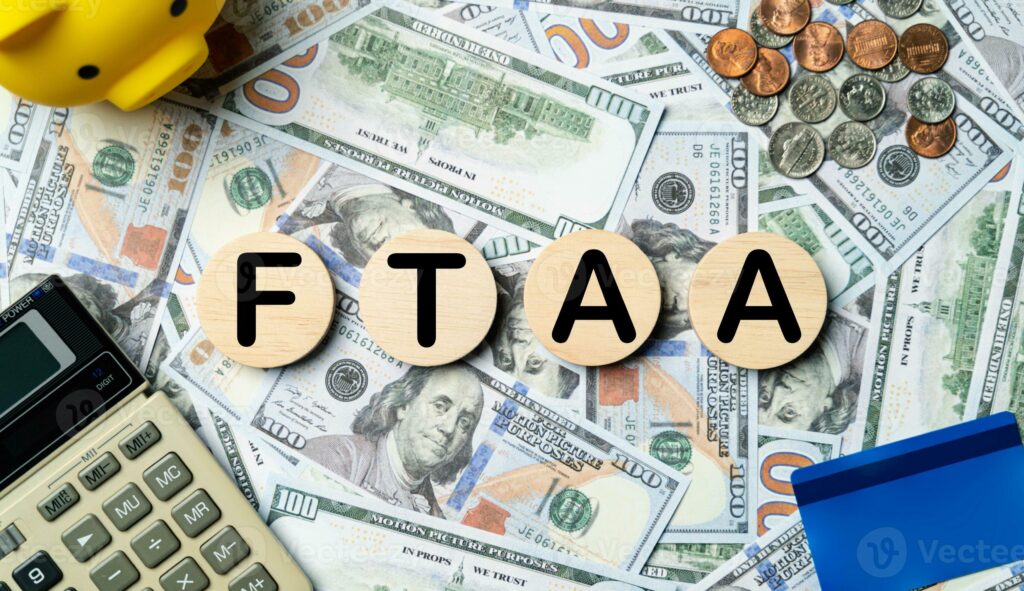FTAA Meaning
FTAA(Free Trade Area of the Americas) is an acronym that designates the Free Trade Area of the Americas. It was about the implementation of a project by which in all of America (except Cuba) taxes on import and export of products and raw materials would be progressively reduced until they were freed and investment would be accentuated, for the benefit of all member countries. However, the movement of people is not included in that freedom.
The origin dates back to the end of 1994, with the participation of 34 countries, and its headquarters was in Miami. The FTAA aroused much praise from some countries and deep criticism from others, especially with respect to intellectual property and patents, which would create a great dependence of the rest of the countries on the United States, since its own rules would dominate the matter and the would benefit at the expense of the rest.
Regional integration in trade matters was a product of globalization and was materialized in many other treaties that preceded it: Bolivia, Colombia, Peru, Ecuador, and Venezuela gave birth, in 1969, to the Andean Pact. Argentina, Uruguay, Paraguay, and Brazil, plus Bolivia and Chile as associates, founded Mercosur in 1991. In 1992, the United States, Canada, and Mexico created NAFTA. In the case of the FTAA, it would be a much broader project, including everyone in a common pact. If it had come to fruition, it would be the largest economic block in the world, concentrating 40% of the planet’s production and involving 800,000,000 people.
Among the most fervent opponents, we can name the MST (Landless Movement) in Brazil, the indigenous movements of the entire Latin America, as well as many political parties and independent groups.
Between November 4 and 5, 2005, the IV Summit of the Americas took place in the city of Mar del Plata (Argentina). There Panama, with the approval of the United States, expressed its intention to reopen the FTAA, while the members of Mercosur maintained that this agreement is not satisfactory due to the great asymmetries of the member states. Hugo Chávez, at that time president of Venezuela, criticized the FTAA as another instrument that contributes to US imperialism to exploit weaker countries. This brought him into conflict with President Vicente Fox of Mexico, who spoke out in favor of the FTAA and caused a diplomatic conflict between both countries. Argentina and Brazil raised objections to the project, demanding several conditions for its implementation, such as the elimination of agriculture subsidized by the United States, that markets have real access, and that regional particularities be taken into account.
FTAA Meaning in Hindi
FTAA (फ्री ट्रेड एरिया ऑफ द अमेरिकाज) एक संक्षिप्त नाम है जो अमेरिका के फ्री ट्रेड एरिया को दर्शाता है। यह एक ऐसी परियोजना के क्रियान्वयन के बारे में था जिसके द्वारा पूरे अमेरिका (क्यूबा को छोड़कर) में उत्पादों और कच्चे माल के आयात और निर्यात पर करों को उत्तरोत्तर कम किया जाएगा जब तक कि उन्हें मुक्त नहीं कर दिया जाता और सभी सदस्य देशों के लाभ के लिए निवेश को बढ़ाया जाएगा। हालाँकि, लोगों की आवाजाही उस स्वतंत्रता में शामिल नहीं है।
इसकी शुरुआत 1994 के अंत में हुई थी, जिसमें 34 देशों ने भाग लिया था और इसका मुख्यालय मियामी में था। FTAA ने कुछ देशों से बहुत प्रशंसा और दूसरों से गहरी आलोचना की, विशेष रूप से बौद्धिक संपदा और पेटेंट के संबंध में, जो संयुक्त राज्य अमेरिका पर बाकी देशों की एक बड़ी निर्भरता पैदा करेगा, क्योंकि इसके अपने नियम इस मामले पर हावी होंगे और बाकी देशों की कीमत पर लाभ होगा।
व्यापार मामलों में क्षेत्रीय एकीकरण वैश्वीकरण का एक उत्पाद था और इससे पहले कई अन्य संधियों में इसे मूर्त रूप दिया गया था: बोलीविया, कोलंबिया, पेरू, इक्वाडोर और वेनेजुएला ने 1969 में एंडियन संधि को जन्म दिया। अर्जेंटीना, उरुग्वे, पैराग्वे और ब्राजील, साथ ही सहयोगी के रूप में बोलीविया और चिली ने 1991 में मर्कोसुर की स्थापना की। 1992 में, संयुक्त राज्य अमेरिका, कनाडा और मैक्सिको ने NAFTA बनाया। FTAA के मामले में, यह एक बहुत व्यापक परियोजना होगी, जिसमें सभी को एक आम समझौते में शामिल किया जाएगा। यदि यह सफल हो जाता, तो यह दुनिया का सबसे बड़ा आर्थिक ब्लॉक होता, जो ग्रह के उत्पादन का 40% केंद्रित करता और 800,000,000 लोगों को शामिल करता।
सबसे उग्र विरोधियों में, हम ब्राजील में MST (भूमिहीन आंदोलन), पूरे लैटिन अमेरिका के स्वदेशी आंदोलनों के साथ-साथ कई राजनीतिक दलों और स्वतंत्र समूहों का नाम ले सकते हैं।
4 और 5 नवंबर, 2005 के बीच, अमेरिका का चौथा शिखर सम्मेलन मार डेल प्लाटा (अर्जेंटीना) शहर में हुआ। वहां पनामा ने संयुक्त राज्य अमेरिका की स्वीकृति के साथ FTAA को फिर से खोलने का इरादा व्यक्त किया, जबकि मर्कोसुर के सदस्यों ने कहा कि सदस्य राज्यों की महान विषमताओं के कारण यह समझौता संतोषजनक नहीं है। उस समय वेनेजुएला के राष्ट्रपति ह्यूगो चावेज़ ने FTAA की आलोचना की और इसे एक और साधन बताया जो कमज़ोर देशों का शोषण करने के लिए अमेरिकी साम्राज्यवाद में योगदान देता है। इसने उन्हें मेक्सिको के राष्ट्रपति विसेंट फॉक्स के साथ टकराव में ला दिया, जिन्होंने FTAA के पक्ष में बात की और दोनों देशों के बीच एक कूटनीतिक संघर्ष का कारण बना। अर्जेंटीना और ब्राजील ने इस परियोजना पर आपत्ति जताई, इसके कार्यान्वयन के लिए कई शर्तों की मांग की, जैसे कि संयुक्त राज्य अमेरिका द्वारा सब्सिडी वाले कृषि को खत्म करना, बाजारों की वास्तविक पहुंच होना और क्षेत्रीय विशिष्टताओं को ध्यान में रखना।

